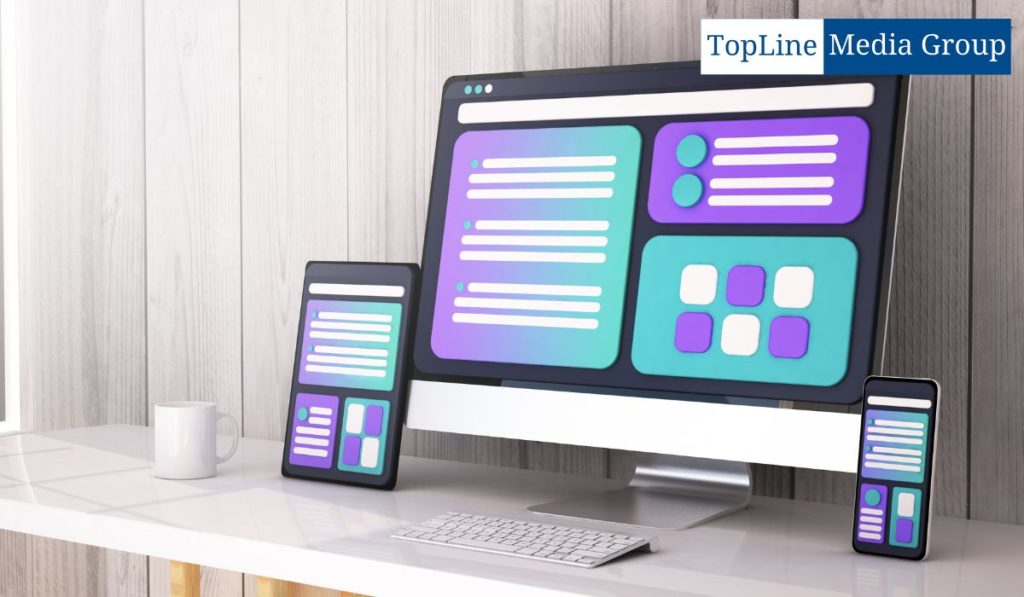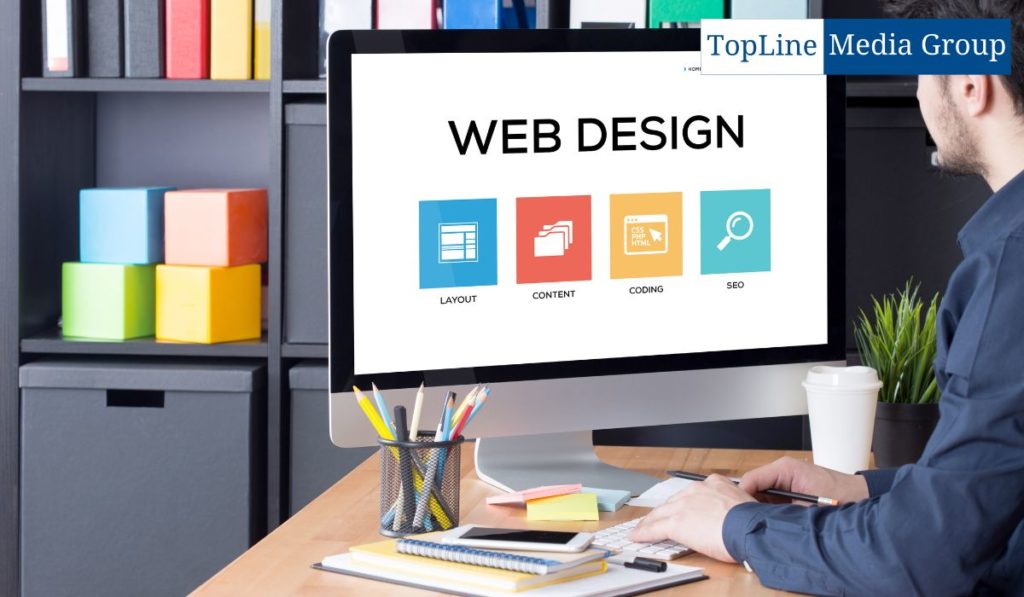Web design is an ever-evolving field that continuously adapts to technological advancements and user preferences. As we look ahead, staying informed about the latest web design trends and technologies is crucial to create captivating and user-friendly online experiences. In this article, we will delve into the future of web design, including emerging trends such as responsive design, mobile-first approach, micro-interactions, voice user interface (VUI) design, augmented reality (AR), virtual reality (VR), chatbots, data visualization, and infographics. Let’s explore the exciting possibilities that lie ahead!
The Rise of Responsive Web Design
Responsive web design has become a fundamental aspect of modern web development. With the increasing use of mobile devices, websites must adapt seamlessly to different screen sizes and resolutions. Responsive design ensures that web pages are displayed correctly and provide optimal user experiences across various devices. By employing flexible grids, media queries, and fluid images, responsive web design allows content to adjust dynamically, creating visually appealing and accessible websites for all users.
Mobile-First Design Approach
 The mobile-first design approach has gained prominence due to the dominance of mobile browsing. Designers first prioritize creating websites optimized for mobile devices and then expand the design for larger screens. By focusing on mobile users’ needs and constraints, such as limited screen space and touch-based interactions, designers can deliver intuitive and user-friendly experiences. The mobile-first design ensures that websites load quickly, have straightforward navigation, and provide relevant content upfront, enhancing user engagement and satisfaction.
The mobile-first design approach has gained prominence due to the dominance of mobile browsing. Designers first prioritize creating websites optimized for mobile devices and then expand the design for larger screens. By focusing on mobile users’ needs and constraints, such as limited screen space and touch-based interactions, designers can deliver intuitive and user-friendly experiences. The mobile-first design ensures that websites load quickly, have straightforward navigation, and provide relevant content upfront, enhancing user engagement and satisfaction.
Micro interactions and User Engagement
Micro interactions refer to small, subtle animations or interactions within a user interface. These micro-interactions are vital in enhancing user engagement and creating delightful experiences. Examples of micro-interactions include a heart animation when liking a post, a loading spinner, or a notification badge. By incorporating well-designed micro-interactions, web designers can add personality, visual feedback, and interactivity to their websites, making them more engaging and memorable for users.
Voice User Interface (VUI) Design
As voice assistants and smart speakers become increasingly prevalent, voice user interface (VUI) design is gaining importance in web design. VUI design focuses on creating intuitive and seamless voice interactions between users and websites. Designers must consider natural language processing, voice commands, and appropriate responses to provide a conversational and efficient user experience. Incorporating voice search capabilities, voice-activated navigation, and personalized voice interactions can significantly enhance the usability and accessibility of websites.
Augmented Reality (AR) and Virtual Reality (VR) in Web Design
Augmented reality (AR) and virtual reality (VR) technologies are revolutionizing web design by immersing users in interactive and engaging experiences. AR overlays digital elements in the real world, while VR creates simulated environments. Web designers can leverage AR and VR to provide virtual product demonstrations, interactive storytelling, virtual tours, and engaging gamified experiences. As these technologies become more accessible, incorporating AR and VR elements into web design will enhance user engagement and create memorable online interactions.
Chatbots and Conversational Interfaces
Chatbots and conversational interfaces are becoming integral to web design, particularly for customer support and service-oriented websites. Chatbots employ artificial intelligence to simulate human-like conversations, providing real-time assistance and automating interactions. By integrating chatbots, websites can offer personalized recommendations, answer frequently asked questions, and guide users through their online journey. Conversational interfaces create more engaging and interactive experiences, increasing user satisfaction and driving conversions.
Data Visualization and Infographics
Data visualization and infographics play a crucial role in presenting complex information in a visually appealing and easily understandable manner. Web designers can effectively leverage data visualization techniques to show statistics, trends, and insights. Infographics combine visual elements, illustrations, and concise text to convey information more efficiently. By incorporating data visualization and infographics into web design, designers can captivate users’ attention, enhance comprehension, and make data-driven content more engaging and memorable.
Future Trends and Predictions in Web Design
The future of web design holds exciting possibilities. We can expect advancements in artificial intelligence (AI), machine learning, voice search optimization, progressive web apps (PWAs), motion design, immersive experiences, and more. As technologies evolve and user expectations change, web designers must stay adaptable and embrace emerging trends to create exceptional user experiences. Keeping up with industry blogs, attending design conferences, and engaging in continuous learning will help designers stay at the forefront of web design innovation.
FAQs
Why is dark mode becoming popular in web design?
Dark mode has gained popularity in web design due to its aesthetic appeal and potential benefits. Dark interfaces provide a visually striking and immersive experience, reducing eye strain in low-light environments. The dark mode also conserves battery life on devices with OLED screens. Designers can implement the dark method by adjusting color schemes, optimizing contrast, and allowing users to switch between light and dark modes for enhanced accessibility and user preference.
How can AR and VR be integrated into web design?
AR and VR can be integrated into web design by leveraging technologies such as WebXR and WebGL. Web designers can create AR experiences by overlaying digital elements onto real-world environments using markers, image recognition, or geolocation. VR experiences can be developed by designing interactive 3D environments that users can explore through virtual reality headsets or web browsers. By incorporating AR and VR, web designers can create immersive and engaging experiences that captivate users and bring content to life.
 What are the critical elements of minimalist design?
What are the critical elements of minimalist design?
Minimalist design focuses on simplicity, clarity, and reducing visual clutter. Critical elements of minimalist design include clean and spacious layouts, ample white space, straightforward typography, limited color palettes, and minimalist navigation menus. The minimalist design emphasizes essential elements and removes unnecessary embellishments, creating a visually pleasing and uncluttered user experience. By embracing minimalism, web designers can achieve elegance, improve usability, and direct user attention to critical content or actions.
How can data visualization enhance web design?
Data visualization enhances web design by transforming complex information into visually appealing and easily understandable graphics. Using charts, graphs, maps, and infographics, web designers can present data concisely and visually engagingly. Data visualization aids in storytelling, support decision-making, and increases user engagement. When executed effectively, data visualization adds depth and context to content, making it more accessible, memorable, and impactful for users.
Why is personalization important in user-centric design?
Personalization is crucial in user-centric design as it tailors the user experience to individual preferences, needs, and behaviors. Web designers can create more relevant and engaging experiences by personalizing content, recommendations, and interactions. Personalization enhances user satisfaction, increases conversion rates, and fosters customer loyalty. Through user data analysis, segmentation, and targeting, designers can deliver personalized content, product recommendations, and tailored user journeys, ultimately creating meaningful connections with users.
How can website performance be optimized?
Website performance can be optimized by implementing various techniques, such as:
- Optimizing images and multimedia: Compressing ideas, using appropriate formats, and lazy-loading techniques can significantly improve page load times.
- Caching and content delivery networks (CDNs): Implementing browser caching and leveraging CDNs reduce server response times and distribute content more efficiently.
- Minifying code: Removing unnecessary characters and whitespace from HTML, CSS, and JavaScript files reduces file sizes and improves loading speed.
- Code optimization: Writing clean and efficient code, reducing redirects, and minimizing the use of external scripts and plugins can enhance website performance.
- Server optimization: Choosing a reliable hosting provider, optimizing server configurations, and implementing caching mechanisms at the server level can boost performance.
- Mobile optimization: Designing responsive websites that adapt to different devices and optimizing mobile-specific features, such as touch gestures and viewport settings, ensures optimal performance on mobile devices.
By implementing these optimization techniques, web designers can create fast, responsive websites that provide smooth and enjoyable user experiences.
What are the best practices for ensuring security and privacy in web design?
Ensuring security and privacy in web design is crucial for protecting user data and maintaining user trust. Here are some best practices:
- Secure communication: Implement SSL/TLS certificates to encrypt data transmission between users and the website, ensuring secure communication.
- Robust authentication: Use secure authentication mechanisms, such as two-factor authentication, to protect user accounts from unauthorized Access.
- Regular updates and patches: Keep software, plugins, and frameworks up to date to address security vulnerabilities and ensure optimal protection.
- Data protection: Employ secure database management practices, including data encryption, secure storage, and regular backups.
- Privacy policy and consent: Communicate privacy policies, obtain user consent for data collection and processing, and comply with relevant data protection regulations, such as GDPR or CCPA.
- Secure coding practices: Follow fast coding guidelines, sanitize user input, and prevent common security vulnerabilities, such as SQL injection or cross-site scripting (XSS).
By adhering to these best practices, web designers can create secure and privacy-conscious websites that safeguard user data and protect user privacy.
How can websites be designed to be accessible to all users?
Designing accessible websites ensures that users with disabilities or impairments can access and interact with the content effectively. Here are some critical considerations for accessible web design:
- Semantic markup: Use proper HTML tags to structure content, provide meaningful labels for form elements, and use ARIA attributes to enhance accessibility for assistive technologies.
- Alternative text (alt text): Provide descriptive alt text for images, enabling users with visual impairments to understand the visual content.
- Keyboard accessibility: Ensure that all website functionalities can be accessed and operated using a keyboard alone, without relying on mouse interactions.
- Color contrast: Use sufficient color contrast between foreground and background elements to make content readable for visually impaired users.
- Captions and transcripts: Provide captions for videos and transcripts for audio content to accommodate users with hearing impairments.
- Assistive technology compatibility: Test the website with assistive technologies like screen readers to ensure compatibility and proper functioning.
By incorporating these accessibility principles, web designers can create inclusive and user-friendly websites that cater to the needs of all users, regardless of their abilities or impairments.
What are the benefits of collaborative design and prototyping?
Collaborative design and prototyping foster effective communication, streamline the design process, and improve the overall quality of web design projects. Here are some benefits:
- Enhanced creativity and innovation: Collaborative design encourages diverse perspectives, allowing team members to share ideas and explore creative solutions.
- Improved problem-solving: Collaborative design combines different skill sets and expertise, enabling teams to identify and address potential design challenges effectively.
- Efficient decision-making: By involving stakeholders and team members in the design process, the collaborative design facilitates quicker decision-making, reducing delays and iterations.
- User-centered design: Collaboration ensures that multiple perspectives, including user feedback, are considered, resulting in more user-centric and intuitive designs.
- Seamless integration: Collaboration between designers, developers, and other stakeholders ensures a smoother integration of design elements into the final product, minimizing inconsistencies and technical issues.
- Validation and feedback: Prototyping allows for early user testing and feedback, helping to identify usability issues and make necessary improvements before the final implementation.
By embracing collaborative design and prototyping, web designers can create more impactful and successful strategies, fostering a collaborative environment that leads to better outcomes.
What are the future trends and predictions for web design?
The future of web design holds several exciting trends and predictions. Some of them include:
- Voice User Interface (VUI) and Natural Language Processing (NLP): With the rise of voice assistants, websites will increasingly integrate voice commands and conversational interfaces to provide more intuitive and seamless user experiences.
- Progressive Web Apps (PWAs): PWAs combine the best web and mobile app technologies, offering fast and engaging experiences, offline functionality, and push notifications.
- Motion design and micro-interactions: Web design will continue to leverage animations, transitions, and micro-interactions to enhance user engagement, guide interactions, and create delightful experiences.
- Artificial Intelligence (AI) and Machine Learning (ML): AI and ML technologies will play a more significant role in personalization, content recommendations, chatbots, and data-driven design decisions.
- Dark mode and color schemes: Dark mode will continue to gain popularity, and designers will explore innovative color schemes to create visually appealing and accessible interfaces.
- 3D and immersive experiences: As technology advances, web designers will incorporate 3D elements, virtual reality (VR), and augmented reality (AR) to create immersive and interactive experiences.
These trends showcase the evolving nature of web design, driven by emerging technologies and user preferences. Staying informed, experimenting, and embracing innovation will be vital in creating cutting-edge web designs.
How can I stay updated with the latest web design trends and technologies?
Staying updated with the latest web design trends and technologies is crucial to remain competitive. Here are some practical ways to stay informed:
- Follow design blogs and websites: Subscribe to reputable design blogs and websites that regularly publish articles and insights on web design trends, technologies, and best practices.
- Engage in online communities: Join design communities and forums where professionals discuss and share the latest industry trends, news, and resources.
- Attend design conferences and events: Participate in design conferences, workshops, and webinars to learn from industry experts, network with peers, and stay abreast of emerging trends.
- Follow influential designers and thought leaders: Follow influential designers, thought leaders, and industry experts on social media platforms to gain insights, access valuable content, and stay connected to the design community.
- Continuous learning and self-study: Dedicate time for constant learning, and explore online courses, tutorials, and books to expand your skills and knowledge in web design.
- Experiment and explore: Take the initiative to experiment with new design techniques, tools, and technologies. Explore design inspiration platforms and case studies to discover innovative approaches and trends.
Conclusion
Web design continues to evolve, driven by emerging trends, user preferences, and technological advancements. Designers can create captivating and user-friendly websites by embracing responsive layouts, a mobile-first approach, micro-interactions, VUI design, AR, VR, chatbots, data visualization, and infographics. The future of web design holds exciting possibilities, and staying informed and adaptable is crucial for web designers to deliver exceptional online experiences. Let’s embrace the ever-changing landscape of web design and create innovative and engaging websites for the digital world.




